The Importance of Black History
These places share stories of civil rights struggles and African American successes.
Since 1976, our nation has been celebrating Black History Month in February. If you’re looking for ways to learn more about African American history in your state or a state near you, here’s a roundup of locations that are among the best places to travel to find information, stories, exhibits and more.

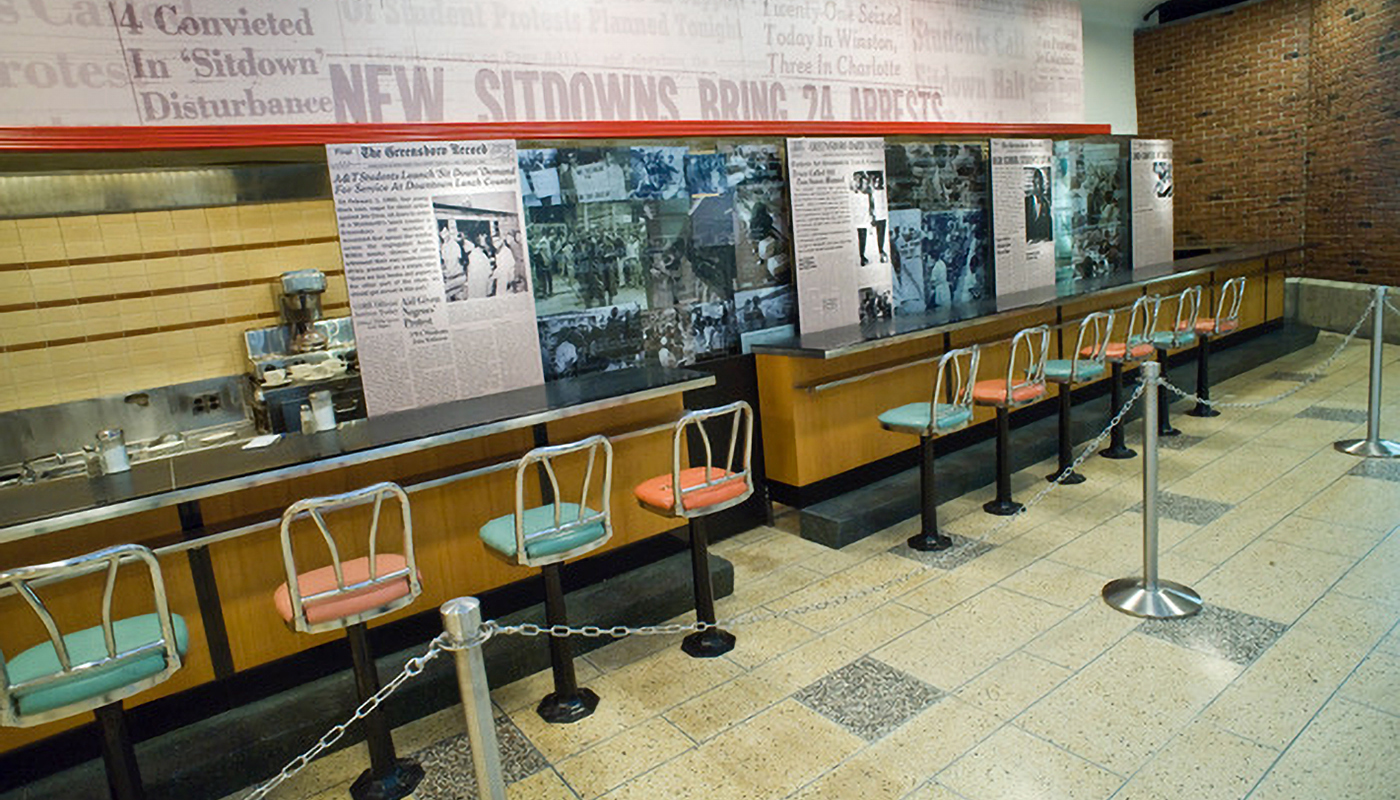 Greensboro Area Convention and Visitors Bureau
Greensboro Area Convention and Visitors Bureau
International Civil Rights Center & Museum
The museum, currently striving to attain UNESCO World Heritage Site designation, is housed in the F.W. Woolworth Building in Greensboro, where, on Feb. 1, 1960, four students from North Carolina Agricultural and Technical State University famously conducted a sit-in at the whites-only lunch counter after being denied service. The museum recently purchased a neighboring property and plans to develop new exhibits in the future.
Harriet Jacobs’ autobiography, Incidents in the Life of a Slave Girl, comes alive as you visit locations on this walking tour in Edenton. The tour includes St. Paul’s Episcopal Church, the approximate location of her grandmother’s house where she hid for almost seven years, Edenton’s 1767 Chowan County Courthouse and a marker at the town’s visitor center detailing her role in the Maritime Underground Railroad assisting freedom seekers on their journey to the North.


Dr. Benjamin E. Mays Historical Preservation Site
In Greenwood, explore the boyhood home of the civil rights icon Benjamin E. Mays, who Martin Luther King Jr. purportedly called his intellectual father, and immerse yourself in the remarkable life and legacy of this renowned scholar and civil rights leader. Mays, born to parents who were sharecroppers and were formerly enslaved, went on to become the president of Morehouse College, as well as an adviser to a trio of U.S. presidents: Kennedy, Johnson and Carter. In addition to the house, there’s also a small museum dedicated to Mays, and a one-room school.
International African American Museum
After 20 years of planning, Charleston’s most anticipated attraction opens to the public on the third weekend in January. On the site of the former Gadsden’s Wharf, the disembarkation point for approximately 48% of enslaved Africans, visitors enter the museum promenade walking in the footsteps of those who crossed the Atlantic as enslaved people. The free-to-the-public ground level African Ancestors Memorial Garden features an infinity fountain, placed on the edge of the original wharf, for quiet reflection.

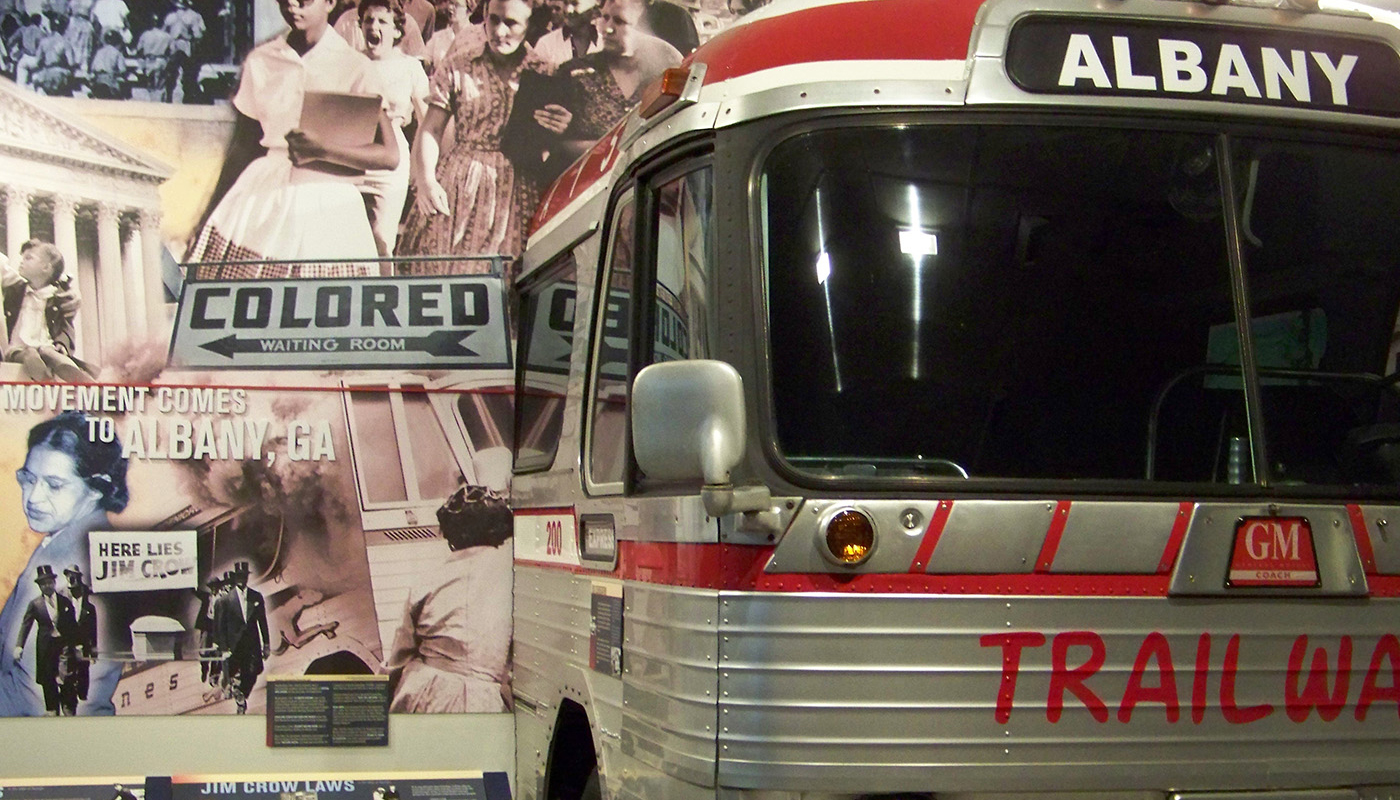 Albany Civil Rights Institute, courtesy of Explore Georgia
Albany Civil Rights Institute, courtesy of Explore Georgia
Immerse yourself in oral histories, artifacts, photographs and more that illustrate the struggle of enslaved people and the fight for civil rights at this interactive museum, located next to the 1906 Old Mount Zion Baptist Church.
Martin Luther King Jr. Atlanta History Tour
This Atlanta history walking tour by Unexpected Atlanta offers an up-close view of some of the places that shaped the great civil rights leader, through a lens of lesser-known stories. You’ll learn about King’s life and legacy through vivid tales and more.
Pin Point Heritage Museum, Savannah
Located in the former A.S. Varn & Son Oyster and Crab Factory, this museum is dedicated to the history of a community of formerly enslaved people founded in 1896 along the Moon River. Through the food, spiritual beliefs and language, guests can learn about the Gullah Geechee culture—from residents who grew up there.

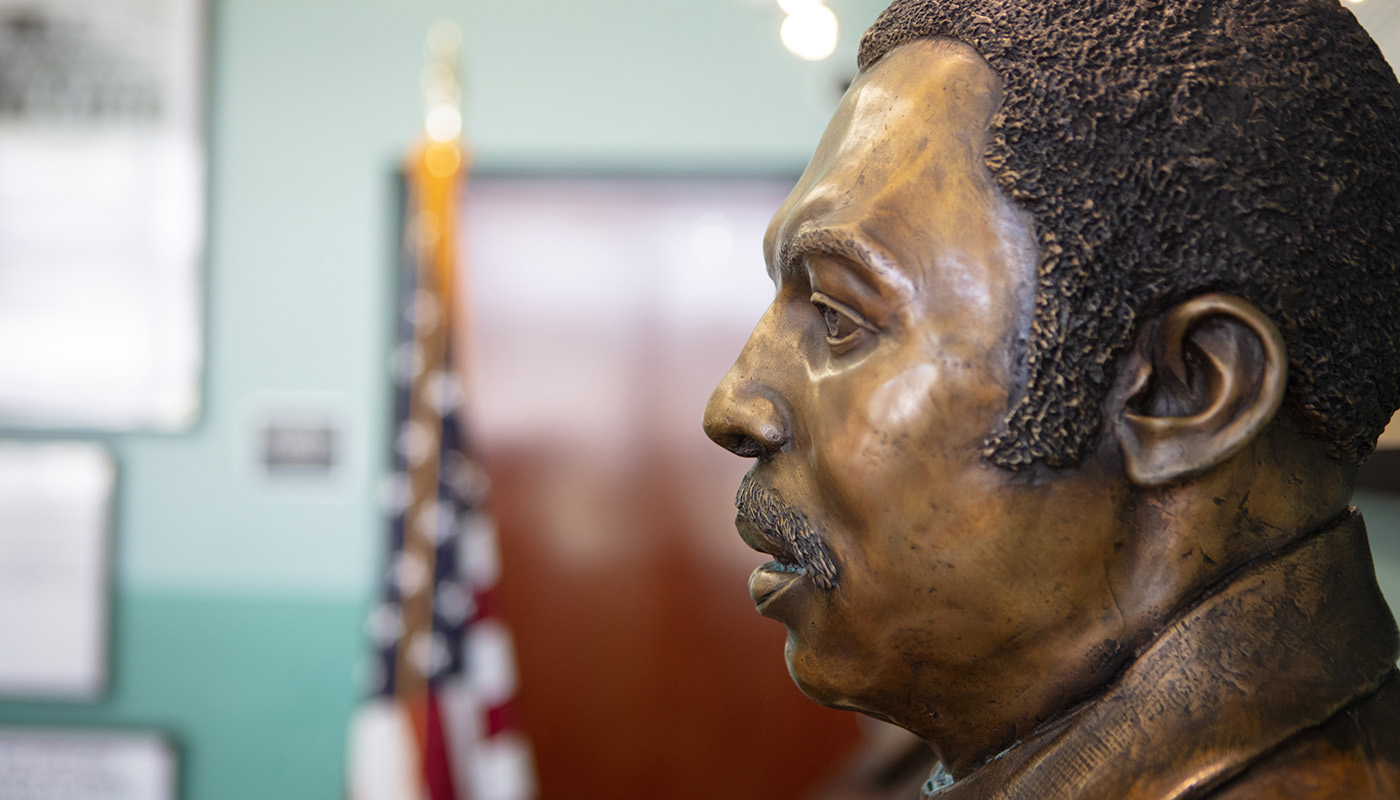 Courtesy of the Greater Miami Convention and Visitors Bureau, miamiandbeaches.com
Courtesy of the Greater Miami Convention and Visitors Bureau, miamiandbeaches.com
Black Police Precinct and Courthouse Museum
Head to historic Overtown, where you will find the headquarters, built in 1950, for Miami’s Black police officers on the then-segregated force. Now a museum, the precinct honors the Black officers who served residents until 1963, the year the precinct was closed and the police force became integrated. The museum also offers a comprehensive tour focused on the first five Black police officers hired in 1944, before the precinct opened, who kept order with no headquarters, no cars and no radio contact.
Lincolnville Museum and Cultural Center, St. Augustine
Located in the Lincolnville Historic District, which was founded by people freed from slavery after the Civil War, this museum showcases more than 450 years of history. It’s housed in the Excelsior School Building, which was the first public Black high school in St. Johns County, and tells the stories of the city’s Black history, from West Africa to the Spanish colonial period to civil rights activism in the 20th century.
Hannibal Square Heritage Center, Winter Park
This center, founded in 2007 by the Crealdé School of Art, is home to “The Heritage Collection: Photographs and Oral Histories of West Winter Park.” The permanent exhibit, which features more than 100 museum-quality pieces, depicts the challenges and triumphs of Black residents living on the historic west side and charts the community’s milestones from 1900 to the present. Hannibal Square also hosts walking tours, story-quilting classes and art classes for all ages.

The Historic First Congregational Church of Detroit Underground Railroad Living Museum
The museum’s Flight to Freedom tour re-enacts the original Underground Railroad passage that operated from 1840 to 1863. Detroit was known by code name “Midnight,” and participants on this tour will experience being led by a conductor through situations such as hiding from bounty hunters, crossing the Ohio “Deep” River, retreating to an Indiana safe house and finally arriving in Detroit.

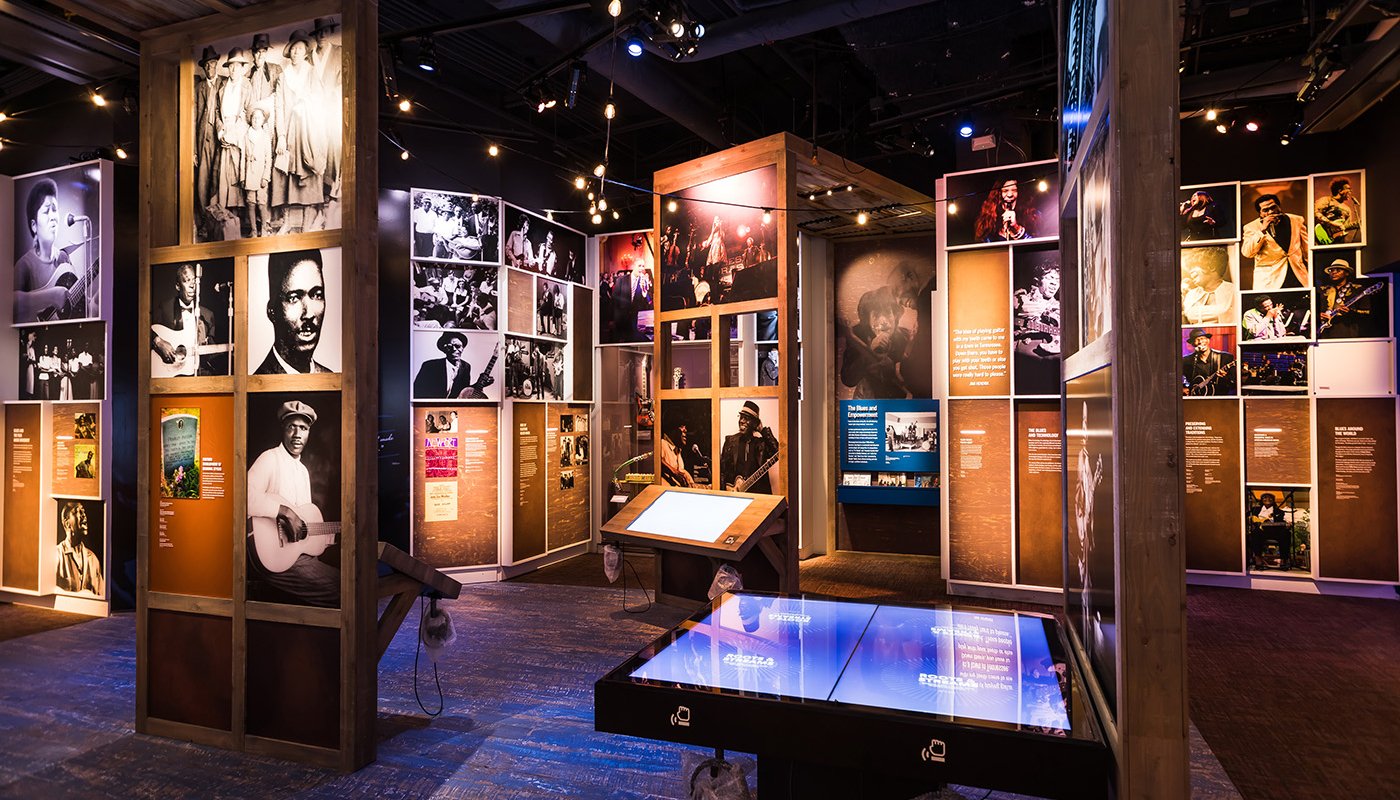 Courtesy of National Museum of African American Music
Courtesy of National Museum of African American Music
National Museum of African American Music, Nashville
This interactive museum is dedicated to preserving and celebrating the history of Black music. Since opening in 2021, it has quickly become a must-visit stop in the city. Guests can save playlists and videos as they make their way through the galleries.
National Civil Rights Museum, Memphis
Located at the Lorraine Motel, where Martin Luther King Jr. was assassinated, this museum is devoted to telling the stories of people who were instrumental in the American civil rights movement. The museum showcases centuries of history (from the resistance of enslaved people to the civil rights movement) through permanent and special exhibits that feature films, oral histories and interactive media.
Davidson County Courthouse and Witness Walls, Nashville
When Nashville civil rights attorney Z. Alexander Looby’s home was bombed on April 19, 1960, 4,000 protesters silently marched past the Tennessee Capitol, ending up at the Davidson County Courthouse. There, Mayor Ben West conceded that segregation was immoral, which became the starting point for the desegregation of public accommodations in the city.
In 1995, a plaque commemorating the event was placed in front of the courthouse. In 2017, the Witness Walls were dedicated in a public ceremony. Made of concrete by artist Walter Hood and installed next to the courthouse, the sculptural walls capture school desegregation, lunch counter sit-ins, economic boycotts, marches, meetings and Freedom Rides.

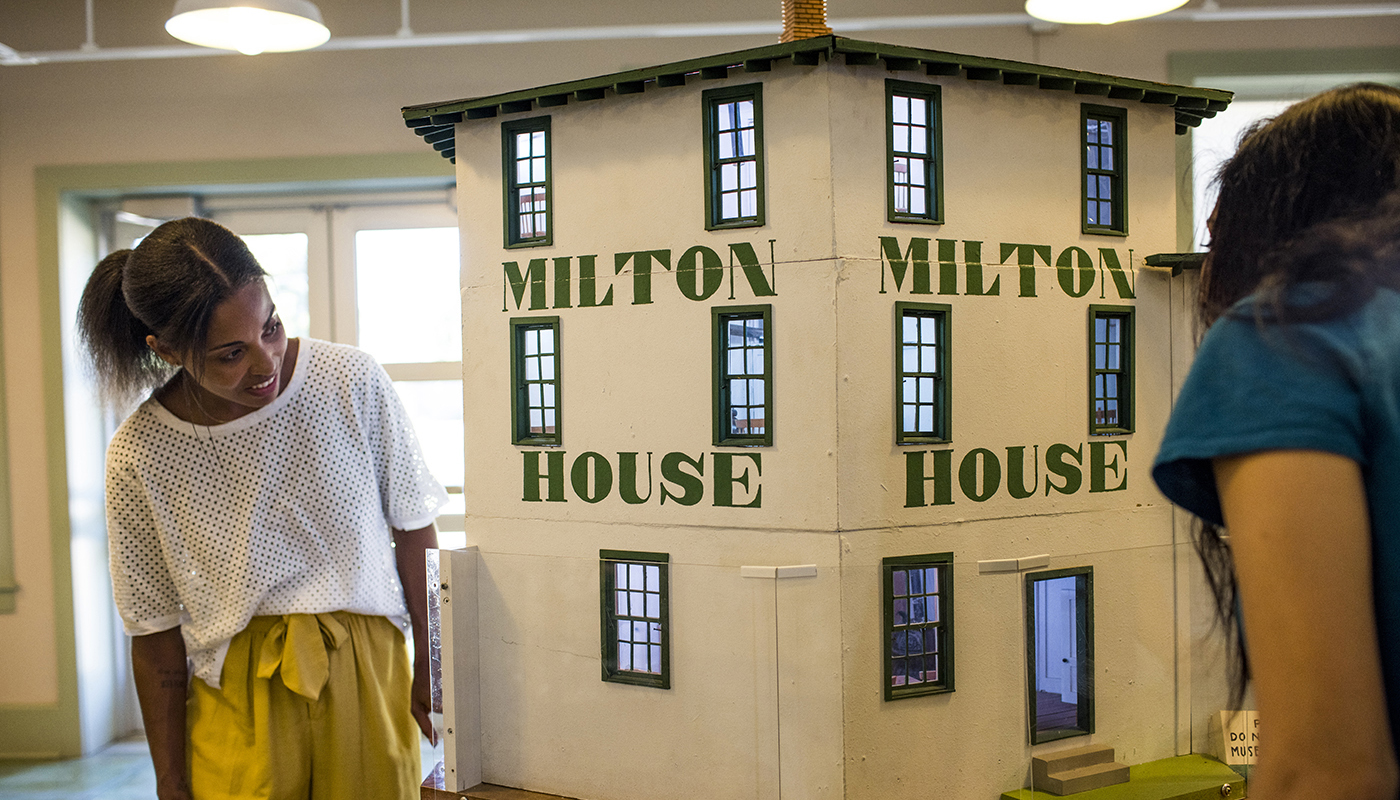 Travel Wisconsin
Travel Wisconsin
Milton House Museum, Milton
This museum is the last certified Underground Railroad site open to visitors in Wisconsin. The house operated as a stop on the Underground Railroad from its construction in 1844 through the entirety of the Civil War. A guided hour-long tour takes visitors to the hexagonal inn and through the underground tunnel connecting to the Goodrich pioneer cabin.
America’s Black Holocaust Museum, Milwaukee
To commemorate and honor Black history on a wider scale, visit the beautifully restored America’s Black Holocaust Museum. James Cameron founded this historical and memorial museum, after visiting Yad Vashem, the World Holocaust Remembrance Center, in Jerusalem.
Cameron saw similarities between the suffering of the Jewish people and that of African Americans. Here visitors are taken on a chronological journey through a U-shaped gallery that shares information about the Black Holocaust from precaptivity to the present.

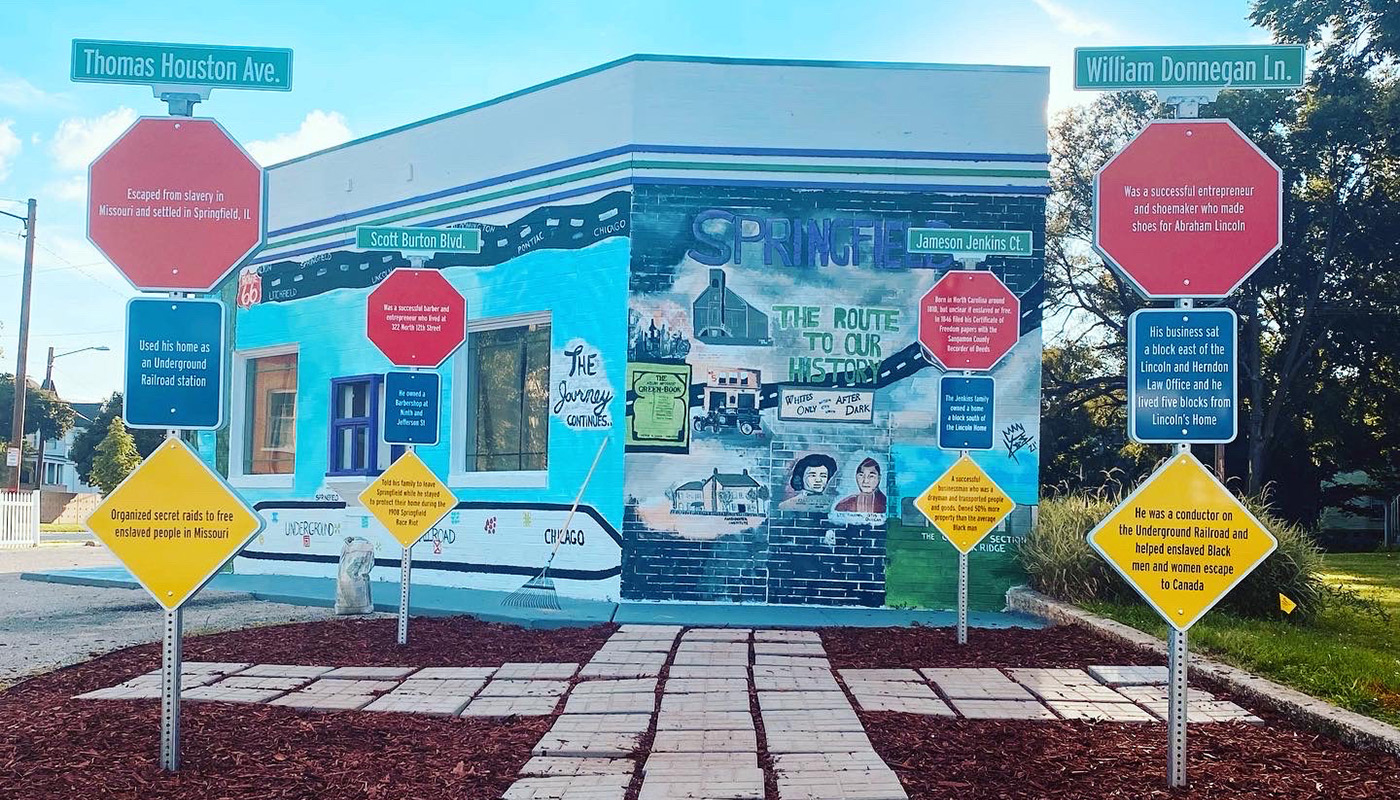
This permanent museum focuses on the challenges faced by Black people in the state capital and along historic Route 66. It also explores Springfield’s history as a stop on the Underground Railroad and its place in the foundation of the NAACP, as well as the role of Black businesses in the community.
Formerly the residence of a prominent local citizen, this 19th-century mansion is now home to a museum dedicated to Geneseo’s history. The house itself is reputed to have been a stop on the Underground Railroad, helping enslaved people on their journey to freedom in the North. Visitors today can learn about the home’s important historical function as a safe house and see the rooms and hiding places where passengers would stay as they passed through.

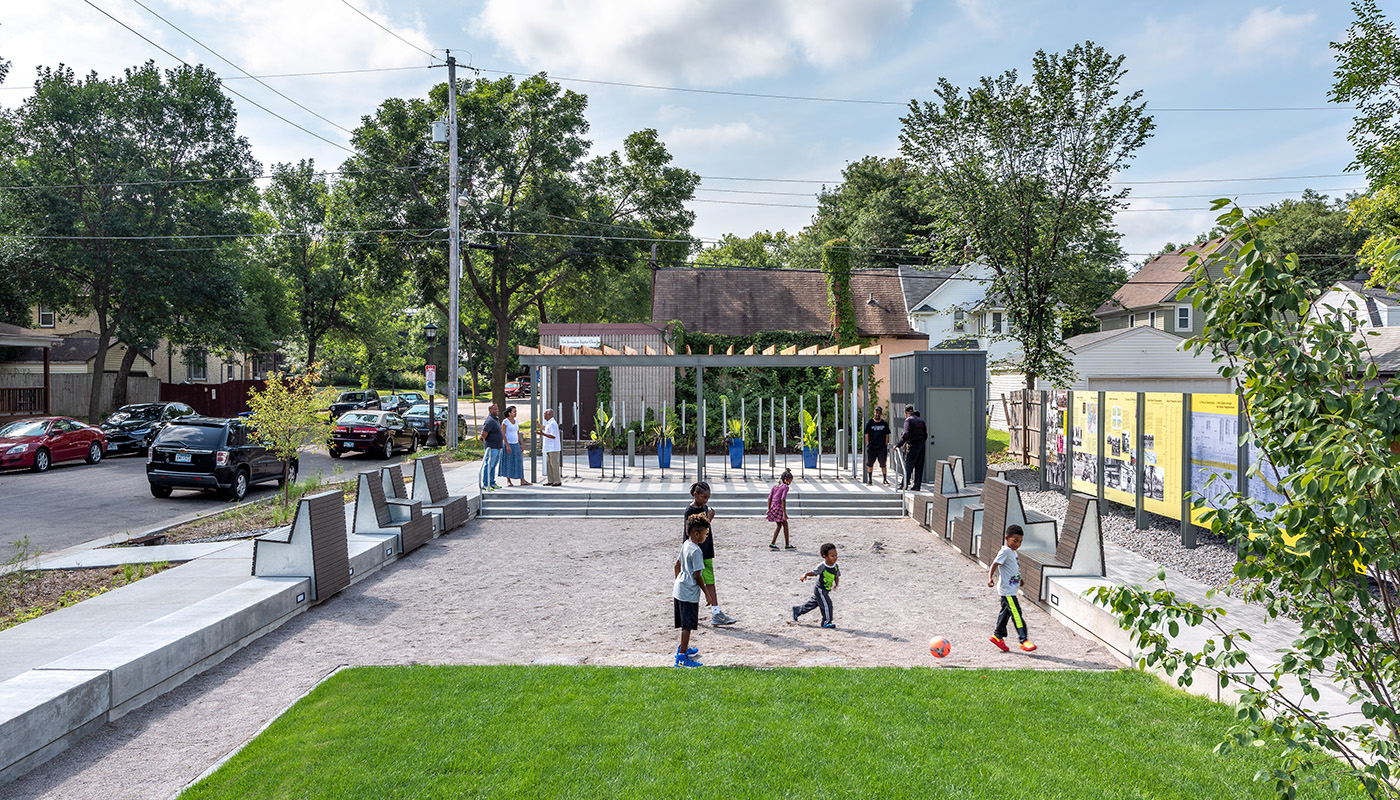
Rondo Commemorative Plaza, St. Paul
The expansion of Interstate 94 in the ’60s tore through the heart of Rondo, St. Paul’s vibrant Black community. Then, in 2013, a fire destroyed a two-story social club, the neighborhood’s last vestige. Within five years, the community created a small park memorial, designed by architecture firm 4RM+ULA, on the site, with green space, benches and an exhibit relaying Rondo’s rich history.
Established in 1976 and once a creative home to playwright August Wilson, this Rondo-area theater is evolving into the Penumbra Center for Racial Healing. It’s an artist-led endeavor committed to social change, with performance at its core. Sugar in Our Wounds, a story of two enslaved men, runs Feb. 14–March 12.
George Floyd Global Memorial, Minneapolis
This grassroots tribute emerged at the corner of East 38th Street and Chicago Avenue South in Minneapolis, the site where George Floyd was killed by police on May 25, 2020. Today, the intersection has become a living memorial and gathering spot dedicated to Floyd and other lives taken unjustly. The site is filled with offerings, murals and art, including the steel raised-fist sculpture at its core.

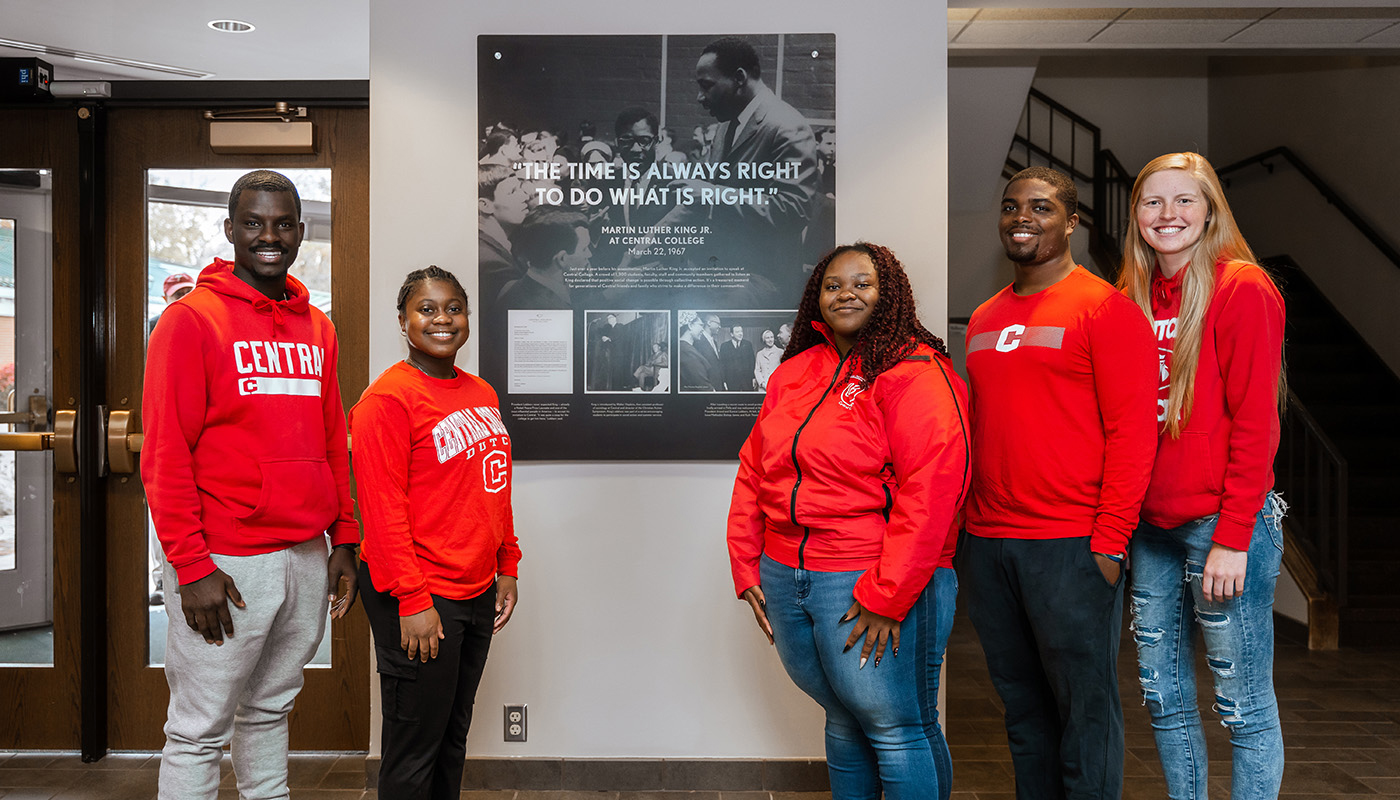 Photo courtesy of Paul Joy, Central College
Photo courtesy of Paul Joy, Central College
This college honors its connection to Martin Luther King Jr. with an exhibit commemorating the civil rights leader’s visit to the campus in 1967. King spoke about the history of slavery and emancipation, landmark Supreme Court decisions relating to civil rights, and the ongoing struggle for equality. The exhibit on Martin Luther King Jr.’s Central College visit can be seen in the Maytag Student Center lobby.
Jordan House Museum, West Des Moines
The museum is an official site on the National Underground Railroad Network to Freedom. James C. Jordan, a staunch abolitionist who was one of Iowa’s most influential early settlers, built the Victorian home between 1850 and 1870. Before the Civil War, his home served as a stopover on the Underground Railroad. The “Underground Railroad Exhibit” tells the story.
Shattering Silence, Des Moines
Next to the Iowa Supreme Court in Des Moines, the Shattering Silence sculpture commemorates a landmark ruling in the long fight for freedom by enslaved Black Americans. In 1839, the Iowa Territorial Supreme Court issued a ruling that prohibited Ralph Montgomery from being sent back to Missouri when he wasn’t able to raise the $550 he needed to pay for his freedom. On July 4, he was declared free when the court held that “no man in this territory can be reduced to slavery.” Artist James Ellwanger created the limestone-and-steel work.
African American Museum of Iowa Exhibit, Cedar Rapids Public Library
In Cedar Rapids, the African American Museum of Iowa is currently closed for a renovation and flood wall project. Until it opens again (at the earliest in fall 2023), the museum has an exhibit at the Cedar Rapids Public Library. “Suspended: Systemic Oppression in our Schools” is an original exhibition developed by the museum. It examines the role public schools play in propelling some students toward the prison system and explores ways to dismantle the policies that feed the school-to-prison pipeline, which disproportionately affects children of color.

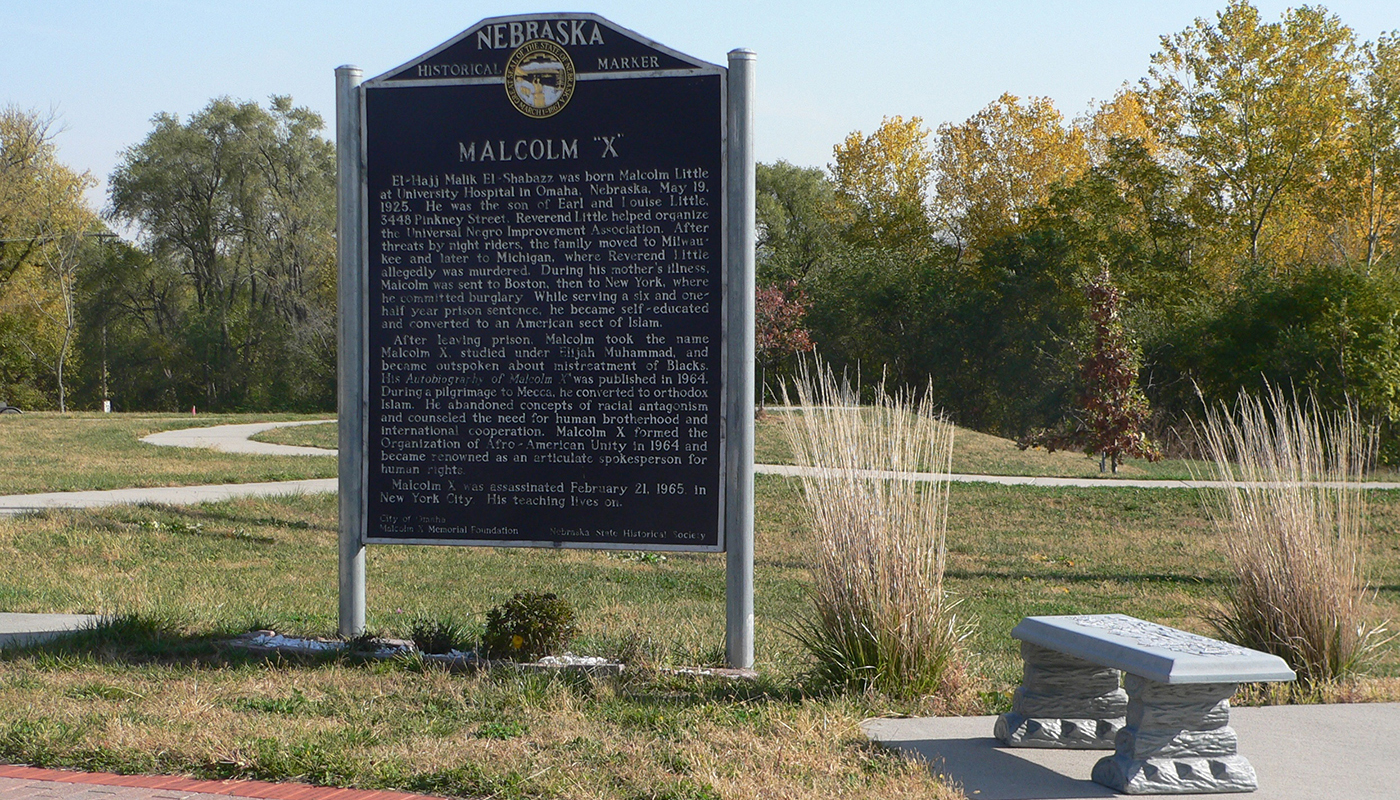 Visit Omaha
Visit Omaha
Malcolm X Memorial Foundation, Omaha
Malcolm X was born on Omaha’s north side in 1925. The house is gone, but the site is commemorated by a state historic marker near the Malcolm X Memorial Foundation, which is open to the public. Make an appointment online to visit Monday through Friday or visit on weekends from noon to 5 p.m.
Fort Robinson History Center, Crawford
Fort Robinson was one the Army’s largest installations on the northern Plains. It served many purposes over its active life, including functioning as the headquarters of the Ninth Cavalry, a regiment of Black servicemen nicknamed buffalo soldiers by Native Americans. You can learn about Nebraska’s buffalo soldiers at the Fort Robinson History Center, which opens May 1. Among its buffalo soldier artifacts are marksmanship medals won by cavalryman Caleb Benson.

Dearfield, a Homestead National Historic Park
Dearfield, Colorado’s largest Black homesteading settlement, was founded by Oliver Toussaint Jackson in 1910. During its heyday between 1917 and 1921, Dearfield may have had up to 300 residents calling it home. By 1925, many Dearfield homesteaders had sought work 70 miles away in Denver. Jackson worked to promote the idea of Dearfield as a “Valley Resort” for African Americans from Denver. The town was listed on the National Register of Historic Places in 1995. A gas station, a diner and the founder’s home are still there, along with a monument sharing the site’s history.
Black American West Museum & Heritage Center, Denver
Housed in the former home of Dr. Justina L. Ford, the first licensed African American female doctor in Colorado, the museum was founded in 1971 by Paul W. Stewart. Stewart wanted to inspire African American kids and adults by teaching them about the African Americans who settled the West.